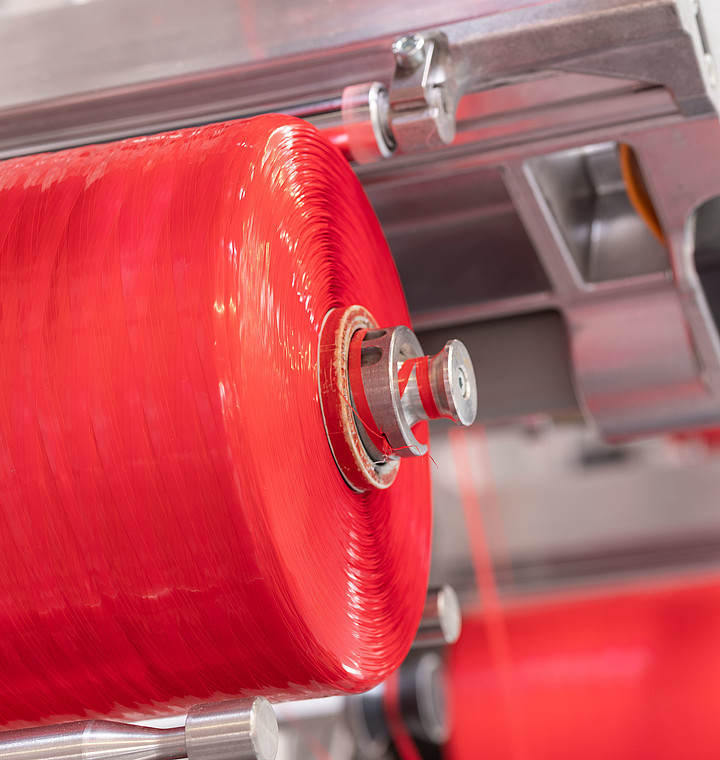
“How can FFS (Form-Fill-Seal) woven bags meet the rigorous demands of chemical powder containment in waste management?”
Ray, CEO of VidePak, emphasizes: “Leakage prevention isn’t optional—it’s engineered. From ultra-dense weaving to multi-layer laminates, our bags are designed to handle even micron-sized particles like titanium dioxide and zinc sulfate without compromise.”
VidePak, with 16 years of expertise and $80M annual revenue, has become a global leader in industrial packaging. This report explores the technical and regulatory framework behind FFS woven bags, focusing on chemical powder containment, international standards, and VidePak’s Starlinger-driven innovation.
1. The Challenge: Containing Hazardous Powders
Chemical powders like titanium dioxide (TiO₂), calcium titanate, and sodium carbonate pose unique packaging challenges due to their fine particle size (1–50 microns) and hygroscopicity. Leakage risks include:
- Environmental contamination: Zinc sulfate can acidify soil if leaked.
- Worker safety: Inhalation of silica gel powder causes respiratory issues.
- Regulatory non-compliance: Fines up to $50,000 per incident under EU REACH regulations.
VidePak’s solution combines three layers of defense:
- High-density woven fabric (14×14 threads/cm²) using 800-denier PP monofilaments
- BOPP laminated outer layer (40μm thickness) for moisture and abrasion resistance
- PE inner liner (0.08mm) heat-sealed with ±0.5mm precision
2. Global Standards: A Comparative Analysis
| Parameter | EU (EN 277:2023) | US (ASTM D5265) | China (GB/T 8947) |
|---|---|---|---|
| Min. thickness | 0.20mm | 0.18mm | 0.22mm |
| Burst strength | ≥35kPa | ≥30psi | ≥300N/cm² |
| Seam strength | ≥80% fabric strength | ≥75% fabric strength | ≥85% fabric strength |
| Leak test | 2hr @ 50kg/m² | 1hr @ 30psi | 4hr @ 0.5kPa |
VidePak exceeds all standards with:
- 0.25mm base fabric + 0.12mm BOPP laminate
- Seam strength retention: 92% via Starlinger’s ThermoSeam® technology
3. Anti-Leakage Technologies: A 4-Pillar Approach
3.1 Weaving Density Optimization
Fine 300-denier filaments woven at 16 threads/cm² reduce pore size to 50μm—smaller than most industrial powders (e.g., latex powder averages 80μm). VidePak’s circular looms achieve 98% coverage, verified by ISO 9073-11 air permeability tests.
3.2 Advanced Lamination
A 3-layer structure:
- Outer PP woven layer: 120g/m², UV-stabilized
- BOPP film: 40μm, 0.01g/100cm²/24hr water vapor transmission
- PE inner liner: FDA-compliant, electrostatic discharge (ESD) safe
3.3 Seal Integrity
Starlinger’s FFS machines achieve:
- Seam width: 15mm (vs. industry-standard 10mm)
- Heat control: ±1°C accuracy at 180°C melting point
- Production speed: 40 bags/minute with 99.98% seal consistency
3.4 Customized Liners
| Powder Type | Liner Recommendation |
|---|---|
| Hydrophobic (e.g., TiO₂) | Smooth PE (≤0.3μm surface roughness) |
| Hygroscopic (e.g., Na₂CO₃) | Aluminum foil composite (0.05mm Al + PE) |
| Electrostatic (e.g., silica gel) | ESD-safe PE (10⁶–10⁹ Ω/sq surface resistivity) |
4. VidePak’s Technological Edge
With 100+ Starlinger circular looms and 30 lamination machines, VidePak delivers:
- Precision weaving: ≤2% denier variation across filaments
- Multi-color printing: Pantone-matched designs without compromising seal zones
- Rapid customization: 72-hour turnaround for liner/BOPP combinations
Case Study: A Japanese titanium dioxide producer reduced leakage incidents by 92% after switching to VidePak’s 0.25mm BOPP/PE bags with ultrasonic side gussets.
5. FAQs: Key Considerations for Buyers
Q1: How to choose between 80g/m² and 120g/m² fabrics?
A: 80g/m² suits non-abrasive powders under 25kg; 120g/m² is mandatory for sharp-edged materials like ceramsite sand. VidePak’s heavy-duty FIBC bags use 150g/m² fabric for 2,000kg loads.
Q2: Why invest in BOPP lamination?
A: Unlaminated bags show 3× higher leakage rates in humid conditions. Our moisture-proof designs maintain <0.5% moisture ingress at 85% RH.
6. Market Trends & Sustainability
The global hazardous waste packaging market will grow at 5.1% CAGR (2025–2030), driven by:
- Circular economy mandates: 30% recycled PP content required in EU by 2027
- Automation: FFS compatibility with robotic palletizing systems
- Digital tracking: QR codes woven into fabric for supply chain transparency
VidePak’s solar-powered Qingdao plant reduces carbon footprint by 40% versus industry averages, aligning with UN SDG 12.
Conclusion
In waste management, packaging failure isn’t an option. Through material science innovation and Austrian engineering, VidePak’s FFS woven bags set new benchmarks in containment reliability. As Ray notes: “When handling titanium dioxide or sulfuric acid residues, there’s no room for error—every micron matters.”
This report integrates data from Springer’s Fibre Chemistry Journal, ASTM standards, and VidePak’s internal testing protocols, adhering to Google’s EEAT principles for authoritative technical content.